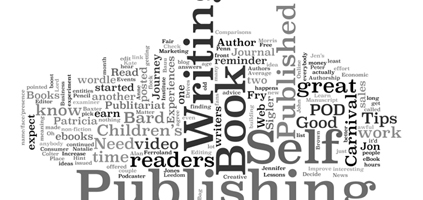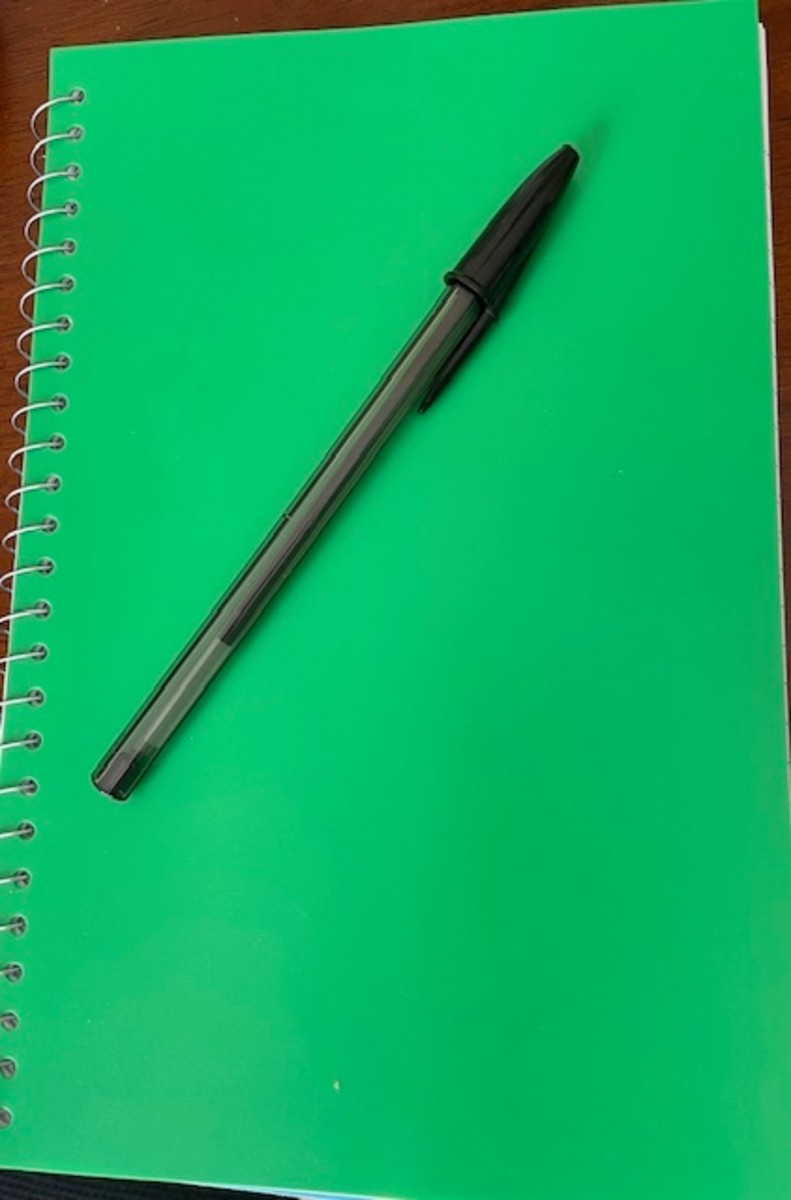Self- Publishing Your e-book:How to self-publish your e-book in 12 steps – a quick guide

Self Publishing Books
- Amazon.com: The Expanded Dialectical Behavior Therapy Skills Training Manual: Practical DBT for Self
The Expanded Dialectical Behavior Therapy Skills Training Manual: Practical DBT for Self-Help, and Individual & Group Treatment Settings - Kindle edition by Lane Pederson, Courtney Pederson. Download it once and read it on your Kindle device, PC,
Self - Publishing Tips
Self- Publishing: 12 steps to self-publishing your e-book (information product) – a quick guide
“Remember, however the basic rule of profitable publishing – find the affluent prospect before you find a prospect you can sell!”
- John .T. Wilson, Author, Teach yourself publishing
You need to consider carefully the reason for going into self-publishing route. Remember, the idea is that you do the work of the publisher which means you will take charge of the marketing, distribution and the public relations as well as advertising of your book. This is a tall order and therefore you need to consider the following:
- What do you want to achieve from self –publishing?
- What are you willing and able to invest?
- What can you commit to self-publishing in terms of time, effort, money and risk?
- You need to carefully consider the above options before you go through this route. Though, you will have all the profits to yourself, you will also be willing to bear the risks from the process.
The Self-Publishing Process
The self-publishing process is made up of the following steps:
- 1. Develop your idea
- 2. Write your manuscript
- 3. Proofread and market test your manuscript
- 4. Prepare your business plan: who will buy the book, how will you market and sell it
- 5. Decide how many books you will print and the format of the book you want
- 6. Get quotes for type setting and printing
- 7. Get manuscript “print ready” (typeset)
- 8. Design the book cover
- 9. Print the book
- 10. Market and advertise the book
- 11. Fulfill orders
- 12. Collect payment and record sales
Develop your idea
What does it mean to develop your idea? How do you develop an idea? How do
you make it bigger, richer, and more attractive?
According to Turn Gorman in his book on “Innovation”, you use information and
imagination. In the case of developing your idea for the information products you
are about to publish, you need to turn your intangible idea in your head to a
tangible one. You also have to figure out whether your product or service in
question will serve the purpose of your clients – solve their problem.
You have to develop your idea into a concept. In doing this – developing your
idea into a concept means that you envision how it will look and work.
Some practical steps to develop your idea for a book could involve the following:
- Craft a great title
- The table of contents – list all the headings and sub headings
- An outline
- A one-minute marketing blurb
- A brief profile of your target audience
- An introduction - why you’re the writing this book and why you’re the best person to write it
- A marketing summary for the book cover
These ideas will act as a guide for you as you write. They’ll help keep your mind
focused on what you’re trying to achieve.
Write your manuscript
This is where the type meets the road. You need to translate your dream to reality; in this regard your thoughts into words. The key thing here is for you to have a plan to making your dream a reality.
In a nutshell you need to ask yourself very important questions to direct your writing.
Who is your audience?
What do you write about?
When do you write and to what extend?
What means will you use to deliver your ideas to make them tangible – written, audio, or video as the case may be.
What resources do you have at your disposal for information?
You need to write with the information you already have, do you need to further research or do you have to interview people so as to get information?
These could be some of the preliminary question you need to provide answers to so as to move your dream forward. The better you are able to provide the answers to the above question AND more, the easier you make your work. Your game plan to producing your manuscript could involve you to set out your plan thus; for example if you have a non-fiction idea, thus:
What is the purpose of your idea?
Craft a compelling vision of your manuscript?
Develop a goal and action plan for the accomplishments.
For example, your goal may be to produce a ten chapter book from your idea and
to break these ideas into chapters and each chapter made up of 500 -2000
words and you have to write a chapter every day and to complete the work in 10
days.
This is just the idea, your decision to what is possible is all hinged around your
belief and value systems. You need to decide what is best for you.
Whatever your plan you need to take ACTION to lead you to your desired
outcome and that is to produce your manuscript; which is the outcome of your
thought in whatever format that you deem right for you.
Proofread and market test your manuscript
After you have [produces the manuscript you need to make the necessary
corrections to make sure that the product you deliver to your customers is free of
error. You may need the services of a proof reader or copy editors to help you
make the necessary corrections. Either way this depends on your budget. You
might as well develop this skill over time and correct your manuscript by
developing scrupulous eye to detail. One school of thought suggests that you can
leave what you’ve written for a while so that you can read it with a fresh eye a
day after. You can also ask a friend who is good with English language to proof
read it for you – for spellings, punctuation and grammar.
In the case of testing your manuscripts you can publish your content in a blog or an article and you can use it to monitor how well it strikes accord with your audience. For example, I had to publish most of the topics that I discussed in this work in my blog at http://lemmyc.hubpages.com so as to rate its popularity with the audience. You can also post it to other social media website and follow the comments from the article. This is an advantage the digital format has over the print format.
Prepare your business plan: who will buy the book, how will you market
and sell it
You need to have a plan on how to sell your book. If you desire to sell
effectively you need a business plan. What is you a business plan and what
does it consist of?
You need to create a one-page business plan which typically answers the
following questions on how you will strategically tackle some operational issues
surrounding your publishing strategy. Remember publishing is business!
The following One Page Business Plan is a simple strategy adapted from
100start, com with modifications will give you a head start. You need to answer
the following questions:
Overview
What will you sell?
Who will buy it?
How will your idea help people?
Pricing
What will you charge for your offering?
How will you get paid?
How else will you make money from this project?
Marketing and Sales/Advertising and Publicity
How will customers learn about your business?
How can you encourage referrals?
Growth for Success - Profit
The project will be successful when it achieves these metrics
Number of customers
or
Annual net income
or
Other metrics
Obstacles/Challenges./Open Questions
Specific concern or question #1
Proposed solution to concern #1
You read this the further read the article on this subject here:
http://lemmyc.hubpages.com/hub/How-to-create-a-marketing-plan-for-your-infromation-product
Decide how many books you will print and the format of the book you want
You have to decide the number of books you will print as well as the format you want to offer it to your audience. The decision you make depends largely on your budget and taste of your audience. The former question of number of books is dependent on if your content is to be positioned to your audience in print format. If you are producing the book on the digital format this is irrelevant since your content could be in a format that can be accessed in a downloadable format by your customers. The format depends on the various forms you’ll want to repurpose your content to a wide range of audience. You have to consider here the format the customer prefers and then you make the effort to develop the process to make it possible. For example, you can re-purpose a written document in Microsoft Word format to PDF, CD, DVD, audio file (MP3) or in form of a video to target different audience.
Get quotes for type setting and printing
This solely depends on the number of copies of the document that you’ve created and the format. If you want to have your work in print you may do the type setting on your computer using any of the publishing suites – desk top publishing software’s or Microsoft words. it may be possible to hire people to do the type setting or you or you can do that yourself if you have the expertise.
In the case of printing you can do the printing yourself with a printer linked to your computer or you can seek the services of a printing contractor in a service shop. The key thing here is based on your budget. Either way you can seek for quotes from local printers in your area so as to find the cheapest option.
Get manuscript “print ready” (typeset)
You can type your work and format it in a “print ready” form ready for typeset. If you can do this you can make use of designers to enable you to get the manuscript ready.
Design the book cover
Most of the people who’ve had experience in information products marketing did point out that the cover of your book or any other information product could boost sales. This is something you have to settle with when you want to create your own information product. This depends on your budget. but if you are not good with graphics design or using the soft wares use for creating beautiful book cover you can find information easily on the internet how best to go about this.
Coming up with a good book cover idea requires you to be creative and imaginative in terms of the whole look of the design; which also includes the title and sub titles of your product. In a nutshell, the cover of your book is the first thing your prospect or would be client or customer will see. For me is like the headline announcing in succinct terms what the stuff your book is made up of.
This simple story will suffice. It’s a story told in the book by Napoleon Hill author of “Think and Grow Rich.”
It was about a publisher of books which sells for a nickel, and he made a discovery which should be worth more for publishers generally. He heard that many people buy titles, and not the content of books. By changing the cover of one of the books that was not moving, his sales on that book jumped upwards – more than a million copies. The inside of the book was not changes in anyway. He merely ripped off the cover of the book that didn’t sell, and put on a new cover with a title that had “box – office” value. That as simple as it seems is an IDEA! It was imagination.
The take away from this story is that that book cover is that idea about your information product as you would want the customer to perceive it. You don’t leave it to chance, you’ve got be as imaginative as you can. If you can’t you need to enlist the expertise of a designer of artist to help shape the idea and bring it to life.
Print the book
Here you need to research the printing options available to you. You can print on
demand to save you cost and prevent you from wasting your effort, time and
resources on unfulfilled orders. You can print your orders using a print shop facility
or print from your desk top or laptop as the case may be.
Market and advertise the book
The marketing and publicity of your information product has been described in
the section on marketing your information products. It will be good to look for the
Information in the next chapter or read about it through this link:
http://lemmyc.hubpages.com/hub/MARKETING_CHANNELS_AND-PROMOTION_OF_YOUR_NFORMATION_PRODUCTS
The key idea here is that you’ve created your information product in your chosen
format. The next thing is to make your offering to your audience. You need to be
clear in your mind who they are and where they hang out. You need to be able to
communicate and engage with the audience that you are targeting and share
with them in a compelling way the value in terms of the benefit of your offering
(product or service) to them. How will your offering change their live in terms of
the way they think, do and have?
The idea here is to carry out a sustained campaign to promote your information
product. This is made of a host of activities – PR, marketing, branding and lead
generation program.
The key idea here is to find the option that is most effective and to optimize it and to rinse it again towards more profitability. What do I mean by this? Let’s look at each one of the above methods one after the other.
PR
This refers to any medium p- TV, Radios, word of mouth that you can use to make your information product to be more visible to your would be potential customers
Marketing
Marketing refers to all the systems that you have in place to communicate about your information product to your prospects. A lot has been discussed about this in preceding section.
Branding
How would you make your information product to stand out from the crowd? Your product should have a unique identity to differentiate it from other products.
Lead generation program
Lead generations programs refers to the methods, tools, strategies and systems that you have in place to target and convert potential customers to raving customers that believe in the value of your offering. You have to continually invent new ways to reach out as well as appeal to would be customers.
Fulfill orders
You have to be clear about the mechanisms you have in place to fulfill the orders for
your information product. Your customer have to be in the clear as to how to access
your offering and also the immediacy of such processes.
Collect payment and record sale
You have to have means to collect payment and record sales. This
information is necessary to help you to monitor sales and keep track of your
business transaction. In the internet there are now a lot of sites that are
dedicated to allow you fulfill this demand in an ongoing basis. Setting up a PayPal account is free and would enable you to record sale. In most cases you can still sell your digital products but with commission, such examples are the use of EBay or Clinbank to market your digital products.
There are many other facilities in the web to enable you collect payment and make sell. All you have to do is to choose one that appeals to you.
© 2013 BSC Ugoji – Founder, Progress Path – Mastery Education
Other articles from LemmyC
- Now master and learn the benefits of the power of th...
This hub seeks to describe techniques to duplicate or leverage your output so as to increase your bottom line in business and life.The essence is to increase your effectiveness and therefore your productivity. You can literally leverage your idea, pr - POSITION YOURSELF AS AN EXPERT: DISCOVER HOW TO MAKE...
We are in an exciting time - the information age. no just that we have the technology - the internet which has given us great impetus and audacity to be able to share and publish information in an unparalleled level. What do you know? How can you pos - Information Products Creation: How to organise knowl...
How ca you make use of the knowledge that you have so as to profit from t? Knowledge is power goes the common usage. But, is it true. Knowledge becomes power when usefully applied for problem solving. After all we are profit from what we know as well - Success habits: discover some habits of super succes...
.What habits or traits separate super successful people from dreamers? “The man of success is the man possessed of the greatest spiritual understanding and every great fortune comes from superior and truly superior power.” Prentice Mullford ... - LEMMYC'S MONEY MAKING SERIES 101: MASTER YOUR MONEY ...
This article highlights the fact that your inner threads of your money blueprint can impact your future financial success. Understanding this is key to changing the inner working of the cause so that the effect becomes fruitful. The idea is based on - Lemmyc's Book Review - Good Luck - Create the Condit...
TITLE: Good Luck - Create the Conditions for Success in Life and Business AUTHORS: Alex Rovira and Fernando Trias de Bes PUBLISHERS: Jossy-Bass an imprint of Wiley NUMBER OF PAGES: 143 By Ben Ugoji The book is quite different from any book... - Information Products Marketing: An Invitation to Cre...
Information products marketing is a profitable and multibillion dollar business. How would like to contribute in this business. It's that simple. It entails creating, packaging and selling for profit. - Self- Publishing Your e-book:How to self-publish you...
This article describes the steps you require to self - publish your articles - ebook, book or any other information product. The key to self publishing is to identify a niche that is of great value.








